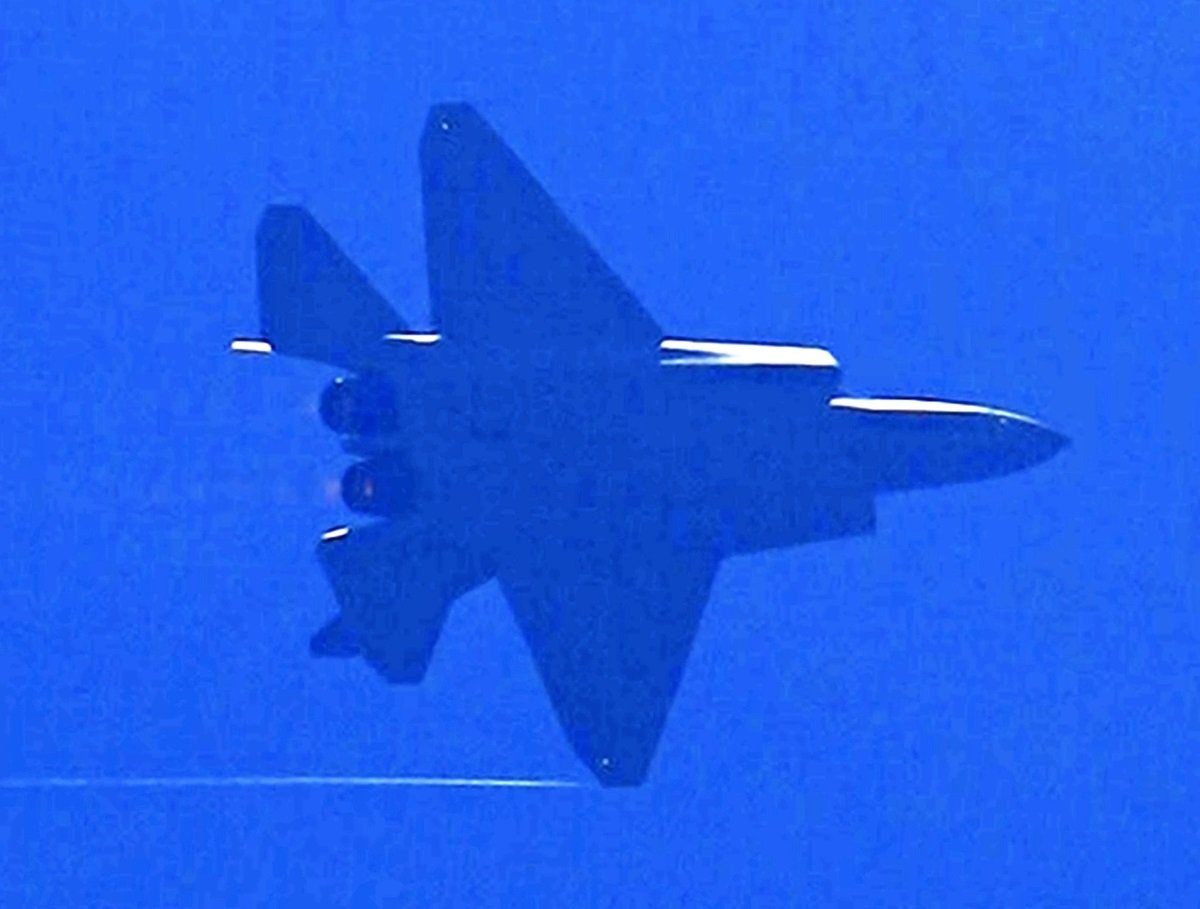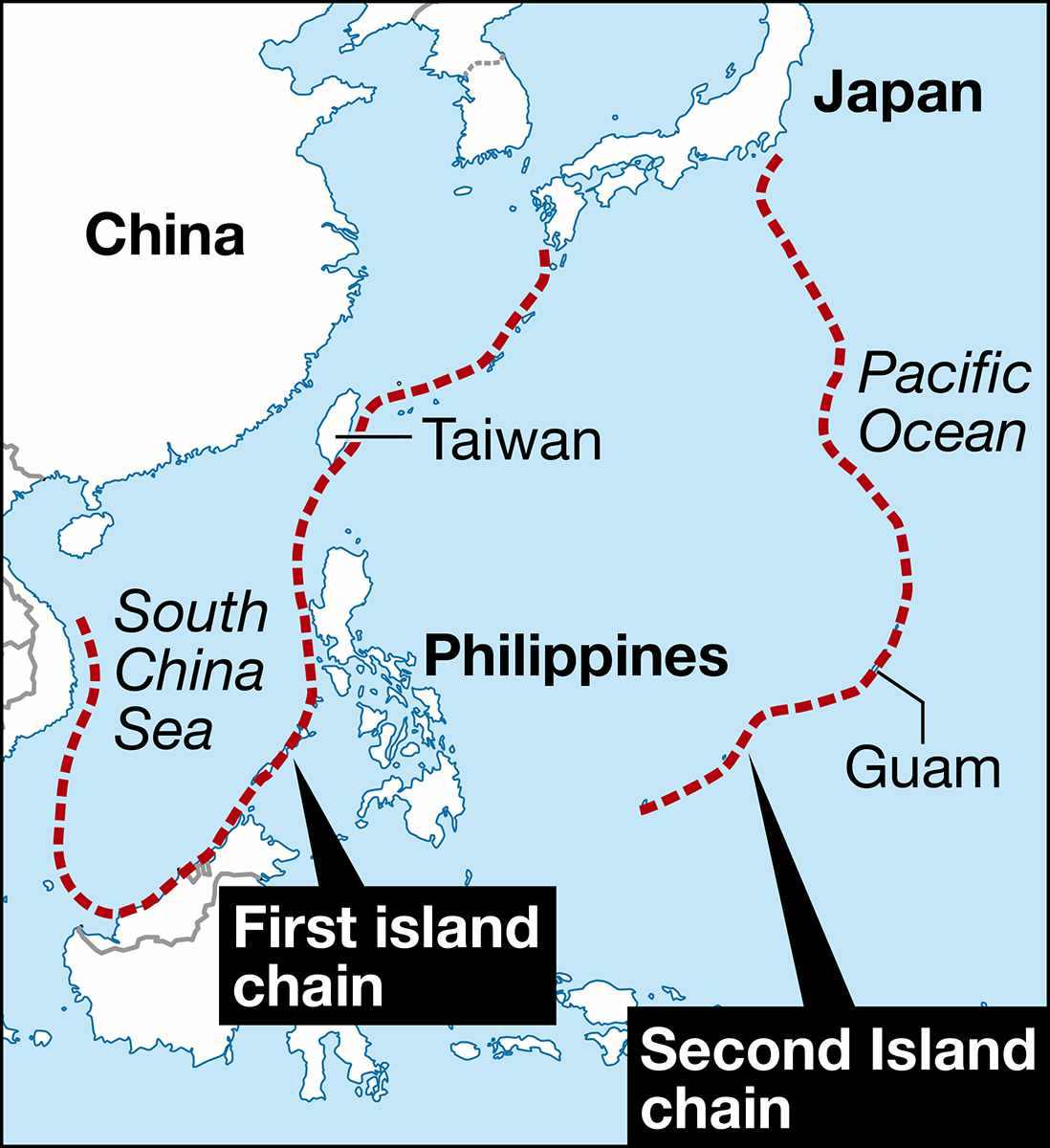China’s Latest Stealth Fighter Shown at Air Show Demonstrates Intent to Rival U.S. Forces, Continuing Military Buildup

A J-35 fighter is seen during Airshow China in Zhuhai, China, on Nov. 13.
2:00 JST, December 1, 2024
ZHUHAI, China — The latest model of a stealth fighter that China recently unveiled at an air show is believed to have the potential to be a strong rival of U.S. forces’ aircraft in the event of a military contingency in Taiwan.
A J-35 fighter, which is China’s latest model of stealth fighter jets, was shown for the first time at the China International Aviation & Aerospace Exhibition, dubbed Airshow China, that was held on Nov. 12-17 in Zhuhai, Guangdong Province.
Military experts believe that a variant of the model will be developed so it can be used on an aircraft carrier, and there is concern that the new fighters will raise the Chinese military’s ability to obstruct the approach of U.S. forces if an armed conflict occurs in Taiwan.
At the air show, Russia also showed off its latest stealth fighter, demonstrating cooperation between Beijing and Moscow.
Carrier-borne aircraft
On Nov. 13, a gray aircraft appeared in the air over Zhuhai amid a steady rainfall, making deep, thunderous sounds. It was the Chinese air force’s J-35A.
On Nov. 12, the opening day of the air show, the fighter was shown to the crowd for only about 10 seconds. On Nov. 13, the fighter flew for about two minutes for the invited guests to see, and it demonstrated a rapid, high-altitude ascent, like pulling a string.
The J-35 model was developed by the Aviation Industry Corporation of China, Ltd., a major state-owned company. It is the fifth-generation stealth fighter following the J-20 model.
The shape of J-35’s body is very similar to that of the U.S. forces’ F-35 stealth fighter. It is obvious that China is conscious of the U.S. military.
China Central Television emphasized that China “became the world’s second country that possesses two kinds of stealth fighters,” comparing itself to the United States, which has the F-22 and F-35 stealth fighter models.
Some military experts think that a naval variant of the J-35 will be developed to use as a carrier-borne aircraft on the Fujian, the Chinese navy’s third aircraft carrier which began test sailing in May.

China’s current carrier-borne fighter, the J-15 model, does not have stealth capabilities that make an aircraft difficult to be detected by radar. If realized, the J-35 would become the Chinese navy’s first carrier-borne stealth fighter.
China’s military buildup could cause tension over security situations in East Asia. However, it is a policy of President Xi Jinping, who aims to build world-class armed forces ahead of the 100th anniversary of the People’s Liberation Army in 2027.
According to Japan’s defense white papers and other sources, China’s fourth- and fifth-generation fighters, including the J-16 and J-20, numbered less than 700 in 2013, just after the Xi administration was launched. In 2024, the figure rose to 1,588, while Japan had 329 fighters.
The then commander of the U.S. Indo-Pacific Command voiced concern in March this year to the U.S. Senate’s Committee on Armed Services, saying that China’s air force will soon be the world’s largest.
As J-35 fighters with stealth capabilities could slip through U.S. forces’ defense networks, the probability that they will be able to fire anti-aircraft and anti-ship missiles against U.S. forces is thought to be higher.
Military drill
The greatest concern about the impact of the new fighter is against a U.S. response to a contingency in Taiwan.
With the aircraft, China’s ability to implement its anti-access/area denial (A2AD) strategy will strengthen. A2AD refers to a plan to obstruct U.S. forces launched from its military bases in Hawaii and Guam from approaching Taiwan to help it.
The A2AD strategy aims to deny U.S. forces from passing beyond the “first island chain” stretching between Japan’s Nansei Islands and the Philippines so that the U.S. military will be unable to conduct operations beyond the “second island chain” to the east of the first chain.
During a Chinese military drill in October in the waters surrounding Taiwan, its carrier strike fleet deployed in the western Pacific east of Taiwan.
Experts believe that the move simulated a predicted deployment of U.S. forces in the event of a military contingency in Taiwan.
South China Sea
However, Moriki Aita of the National Institute for Defense Studies cast doubt on China’s descriptions about the J-35’s capabilities.
“China’s insistence that its fighters’ capabilities are on the same level as those of F-22 and F-35 fighters is doubtful,” Aita said.
In addition, contemporary air warfare is a battle of the combination of elements such as radars, satellites and air-defense missiles as a whole. Aita speculated that Chinese fighters’ capabilities in this context still have not reached the same level as those of U.S. forces.
China’s stance is to make further progress in its military buildup, including developing new weapons. At this year’s air show, large stealth drones and others were exhibited for the first time.
Experts believe that China intends to deploy the new weapons not only against Taiwan, but also in the South China Sea, where Beijing has made maritime advancements in a coercive way claiming territorial sovereignty.
“Military activities around Japan will also become more active,” a military source said of the Chinese military’s moves. “Japan needs to deter such moves by cooperating with the United States, South Korea, Australia and other nearby countries.”
"Politics" POPULAR ARTICLE
-

Japan to Support Central Asian Logistics Route That Bypasses Russia, Plan to Be Part of Upcoming Summit in Tokyo
-

Japan to Tighten Screening of Foreigners’ Residential Status by Providing Information of Nonpayment of Taxes
-

Chinese, Russian Bombers Flew Unusual Path by Heading Toward Tokyo; Move Likely Meant to Intimidate Japan
-

Japan Plans National Database to Track Foreign Ownership of Real Estate, Land as It Weighs New Rules
-

Up to 199,000 Deaths Estimated From Mega-Tsunami; Most Recent Occurrence Took Place in 17th Century
JN ACCESS RANKING
-

Tokyo Economic Security Forum to Hold Inaugural Meeting Amid Tense Global Environment
-

Keidanren Chairman Yoshinobu Tsutsui Visits Kashiwazaki-Kariwa Nuclear Power Plant; Inspects New Emergency Safety System
-

Imports of Rare Earths from China Facing Delays, May Be Caused by Deterioration of Japan-China Relations
-

University of Tokyo Professor Discusses Japanese Economic Security in Interview Ahead of Forum
-

Japan Pulls out of Vietnam Nuclear Project, Complicating Hanoi’s Power Plans






















